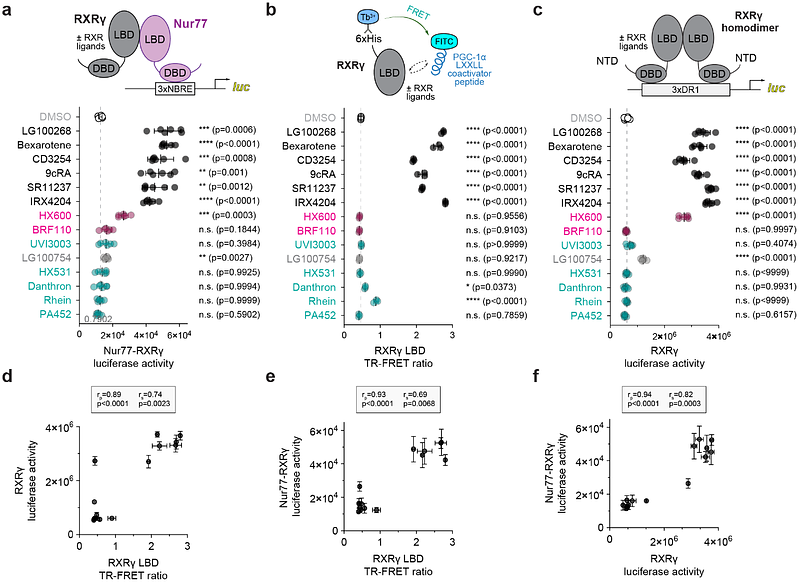Towards a unified molecular mechanism for ligand-dependent activation of NR4A-RXR heterodimers

Towards a unified molecular mechanism for ligand-dependent activation of NR4A-RXR heterodimers
Yu, X.; He, Y.; Kamenecka, T. M.; Kojetin, D. J.
AbstractA subset of nuclear receptors (NRs) function as permissive heterodimers with retinoid X receptor (RXR), defined by transcriptional activation in response to binding RXR agonist ligands. Permissive NR-RXR activation operates via a classical pharmacological mechanism, where binding of an RXR agonist increases coactivator recruitment to the heterodimer. However, we previously demonstrated that transcriptional activation of permissive Nurr1-RXR (NR4A2-NR2B1) heterodimers by an RXR ligand set, which included pharmacological RXR agonists and selective Nurr1-RXR agonists that function as antagonists of RXR homodimers, occurs via a non-classical mechanism: ligand-binding domain (LBD) heterodimer dissociation (Yu et al., 2023). Here, we extend mechanistic ligand profiling of the same RXR ligand set to Nur77-RXR{gamma} (NR4A1-NR2B3), which is evolutionarily related to Nurr1-RXR. Biochemical and NMR protein-protein interaction profiling along with cellular transcription studies indicate that the RXR ligand set, which lacks selective Nur77-RXR{gamma} agonists, may influence Nur77-RXR{gamma} transcriptional activation through both classical pharmacological activation and LBD heterodimer dissociation. However, upon reanalyzing our previously published data for Nurr1-RXR, we found that the inclusion of selective Nurr1-RXR agonists was essential for elucidating the LBD heterodimer dissociation mechanism. Our findings underscore the need for a more functionally diverse RXR ligand set to explore Nur77-RXR{gamma} activation and unify LBD heterodimer dissociation as a potential targeting mechanism for NR4A-RXR heterodimers in neurodegenerative and inflammatory diseases.